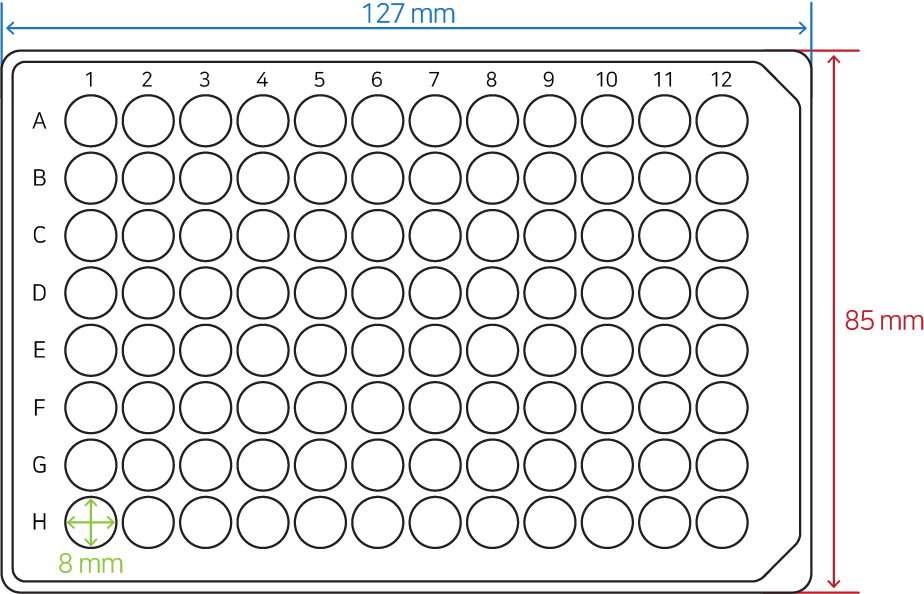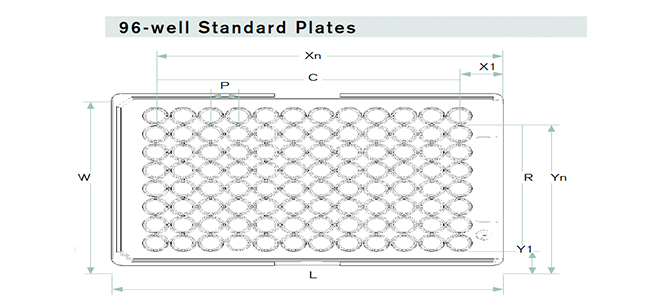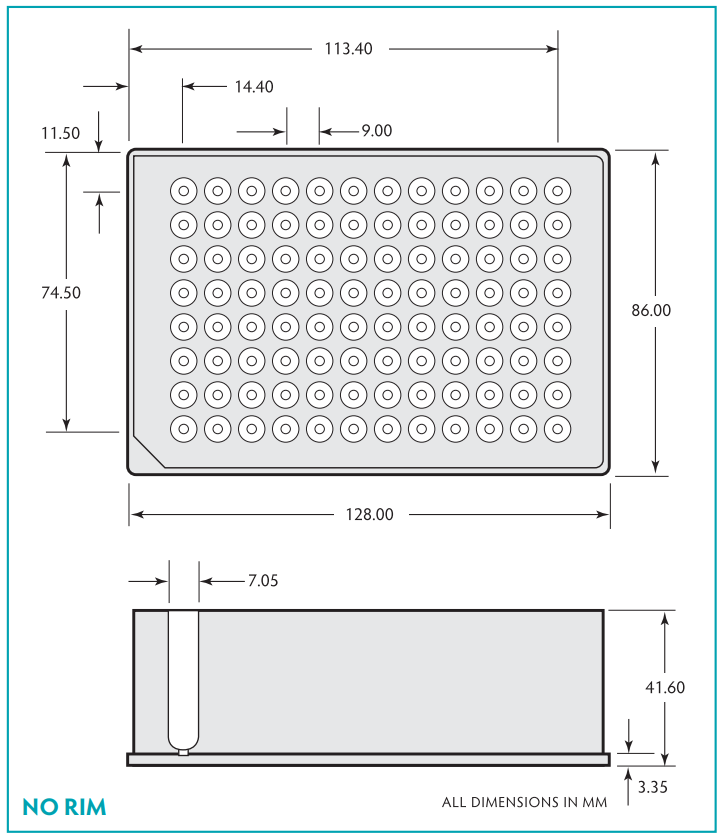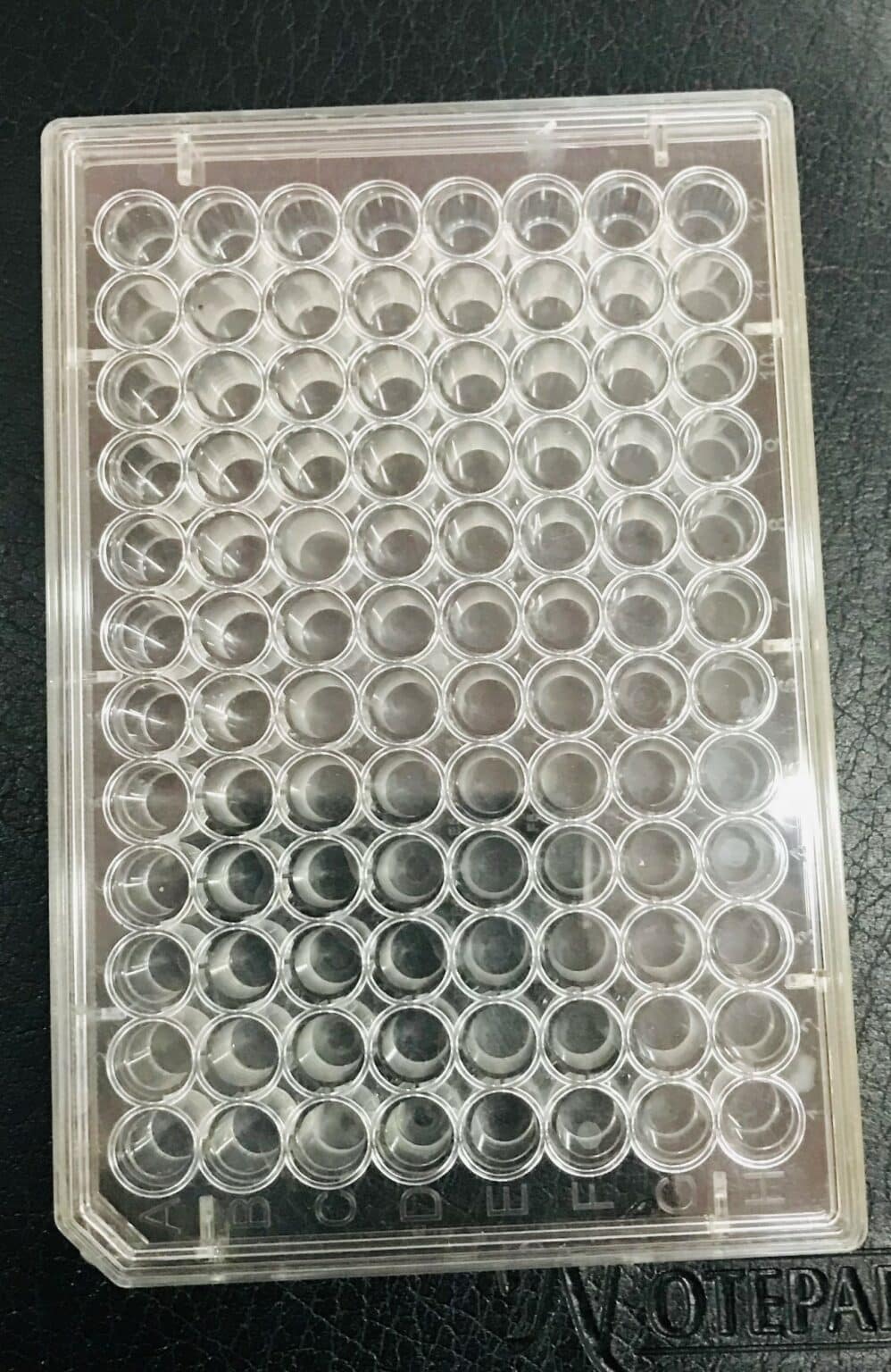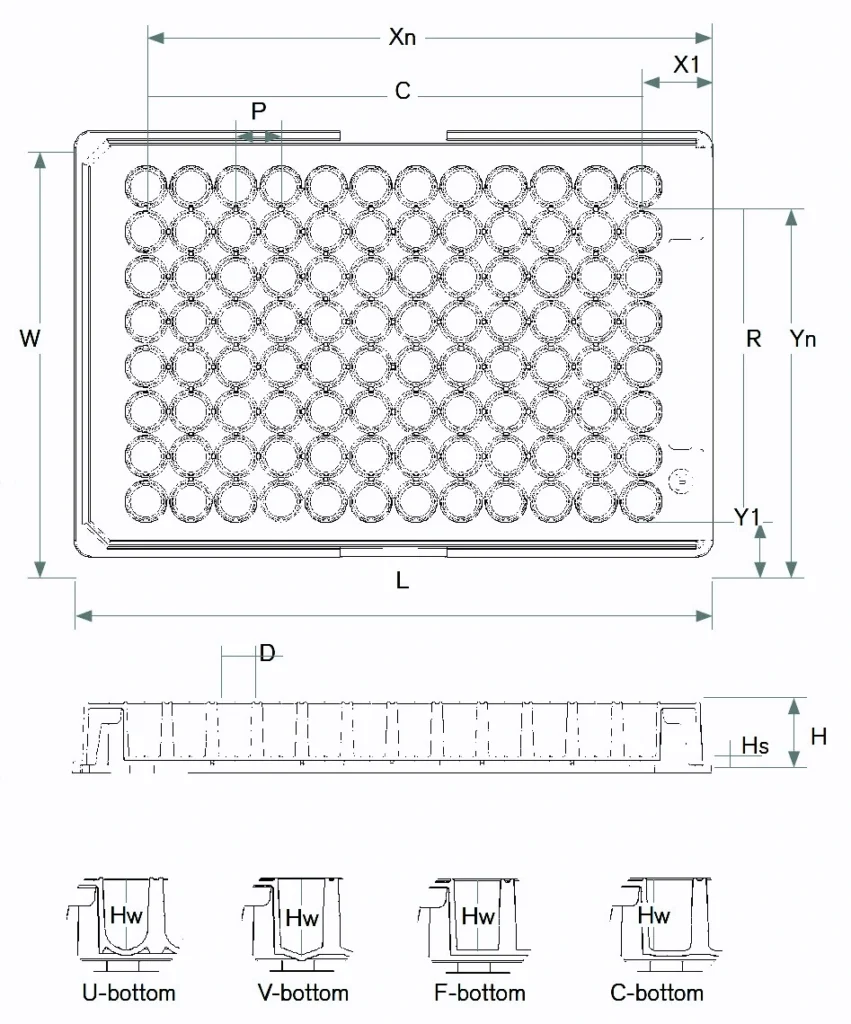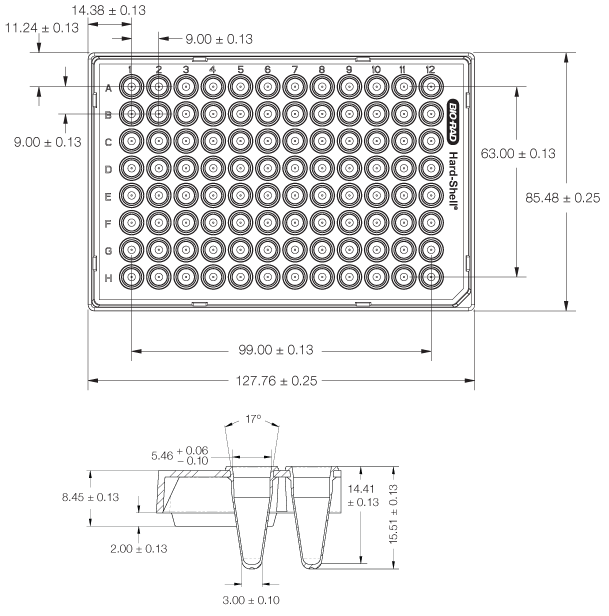How Much Volume Does A 96 Well Plate Hold

Imagine a laboratory, buzzing with the quiet hum of machinery and the focused energy of scientists. Rows upon rows of clear plastic plates sit on benchtops, each dotted with tiny, precisely measured droplets of liquid. These aren't just any plates; they're 96-well plates, the unsung heroes of modern research, each well a miniature reaction vessel holding the key to countless discoveries.
The central question, often surprisingly overlooked, is simple: how much liquid can each well of a standard 96-well plate actually hold? The answer isn’t as straightforward as one might expect, but the typical working volume usually sits between 200 and 300 microliters, although the total well volume can be higher.
The Ubiquitous 96-Well Plate
The 96-well plate has become an indispensable tool across a vast spectrum of scientific disciplines. From drug discovery and high-throughput screening to cell culture and genomics, its versatility and efficiency are unmatched.
Its standardized format allows for easy automation and integration with robotic systems, significantly accelerating research processes.
A History of Miniaturization
The development of the 96-well plate can be traced back to the need for increased efficiency and miniaturization in scientific research. Early methods relied on individual test tubes or cumbersome multi-tube systems.
The introduction of the microplate, with its array of small wells, revolutionized the field, enabling scientists to perform multiple experiments simultaneously using minimal amounts of reagents.
"This miniaturization not only saves valuable resources but also allows for higher throughput, generating data faster than ever before,"explains Dr. Emily Carter, a leading researcher in high-throughput screening.
Delving into the Volume Details
While the total well volume of a 96-well plate can range from 300 to 400 microliters (µL), the working volume is typically lower. This distinction is crucial for preventing cross-contamination and ensuring accurate measurements.
A working volume of 200-300 µL provides sufficient headspace for mixing, prevents liquids from splashing out, and allows for reliable pipetting and dispensing. Overfilling the wells can lead to inaccurate results and potential errors.
Factors Affecting Well Volume
Several factors influence the actual usable volume of a 96-well plate. The design of the well, including its shape (round, flat, V-bottom, or U-bottom) and depth, plays a significant role.
Different plate manufacturers may also have slight variations in their specifications. The type of assay being performed (e.g., cell-based assay, enzyme assay) can also dictate the optimal working volume.
Why Does It Matter?
Understanding the precise volume capacity of a 96-well plate is paramount for accurate and reproducible results. Inaccurate liquid handling can lead to significant errors, especially in quantitative assays.
For instance, in drug discovery, small variations in reagent concentrations can dramatically affect the observed efficacy of a compound. Precise volume control ensures that experiments are performed consistently and reliably.
This is also very important for reproducibility of scientific experiments, a cornerstone of trust in research.
Looking Ahead
The 96-well plate continues to evolve, with advancements in materials, coatings, and designs. Higher-density plates, such as 384-well and 1536-well plates, are becoming increasingly common for ultra-high-throughput screening.
However, the 96-well plate remains a workhorse in many laboratories, providing a balance between throughput, cost-effectiveness, and ease of use. As research demands become even more complex, optimizing the use of this simple yet powerful tool will remain essential.
So, the next time you see a 96-well plate, remember that each tiny well holds not just a small volume of liquid, but also the potential for groundbreaking discoveries.
